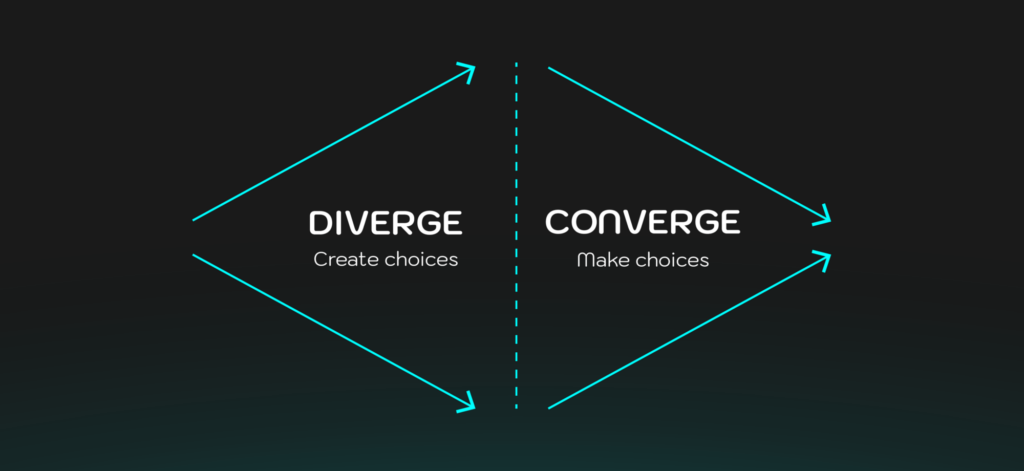Masterclass 2: Lesson 4 of 5
Narrow it down
This is where you rely on your event partner to draw upon their past experience to figure out how the dream can be done—on your budget.
At this point, your event partner will go away and return with either questions or pitches. Rather than proactively paring your event vision down to the bare minimum because you fear it isn’t possible on your budget, give them all the pieces to work with and let them advise. Often, they can bundle things to be more economical. They can text close contacts who can find a better deal, or figure out how to achieve a vast amount of decoration with nothing but clever lighting.
In this lesson, we’ll explain how you can lean on your partner to pare down the proposal to what you know you can get approved.
Brought to you by our team of experts
Want to get this course in your inbox?
Let’s all face and embrace reality

In the converge phase, get realistic
It’s especially important not to tinker with the brief while your events partner is working because items that seem separate can in fact be closely related. Sometimes our clients have the urge to provide their own staff, and say, “Well, what if my person manages the stage? Can we remove that line item?” But you never know how tightly all these things are interrelated—perhaps that stage manager also used to be a lighting specialist and has input in six other areas. Think of the proposal not as a list of products but as a carefully interwoven web of interrelated components. It is fragile, and the easiest way to change it is to tell your events partner your needs and have them adjust.
“Think of the proposal not as a list of products but as a carefully interwoven web of interrelated components. It is fragile, and the easiest way to change it is to tell your events partner your needs and have them adjust.”
If you’ve followed all the steps in this course correctly—prepared less, rebuffed budget battleship by offering a number, dreamt together, and now, allowed that partner to craft a proposal, you should have something that fulfills the spirit of your request and costs what you thought. Maybe even with an exciting extra something tossed in.
From there, you can discuss and adjust. But do the telling and let them do the editing. Otherwise, it’s your attendees who’ll suffer.
Today, ask yourself:
What about the proposal makes me most excited or anxious? What objections do you anticipate? (Share with your partner.)
In the next lesson: How to prioritize what’s been proposed.
Download your RFP template
We’ve rewritten the standard one to help you get more of what you want.



